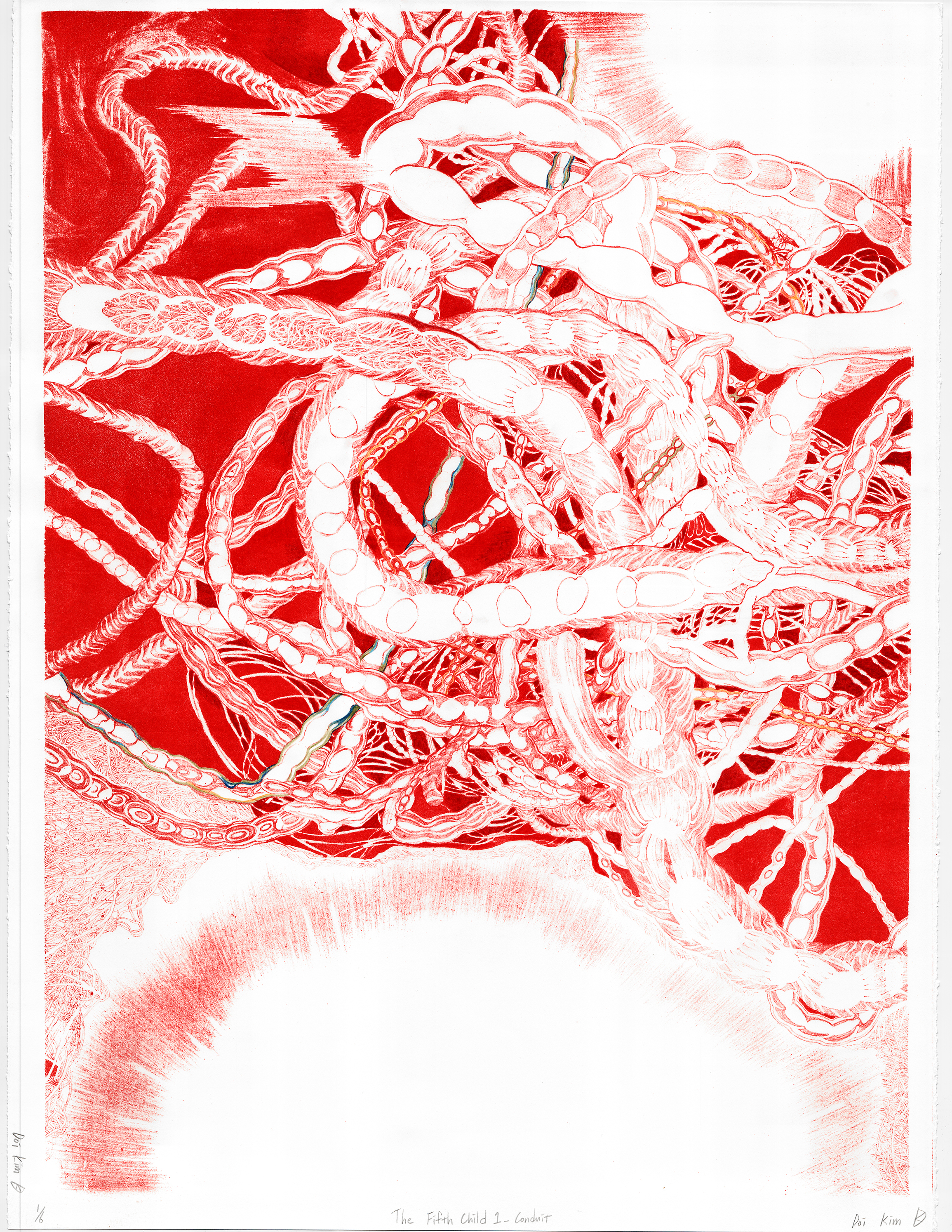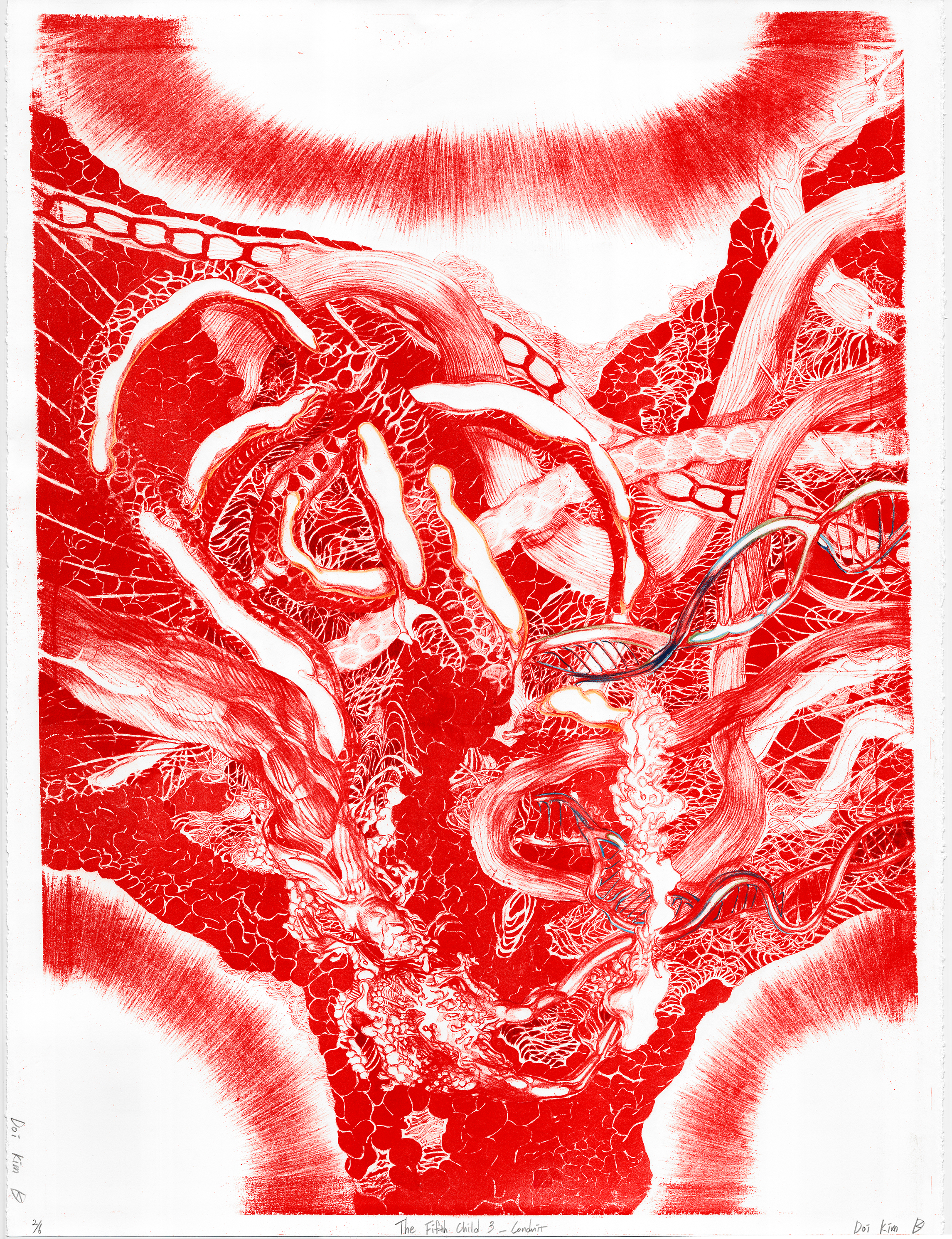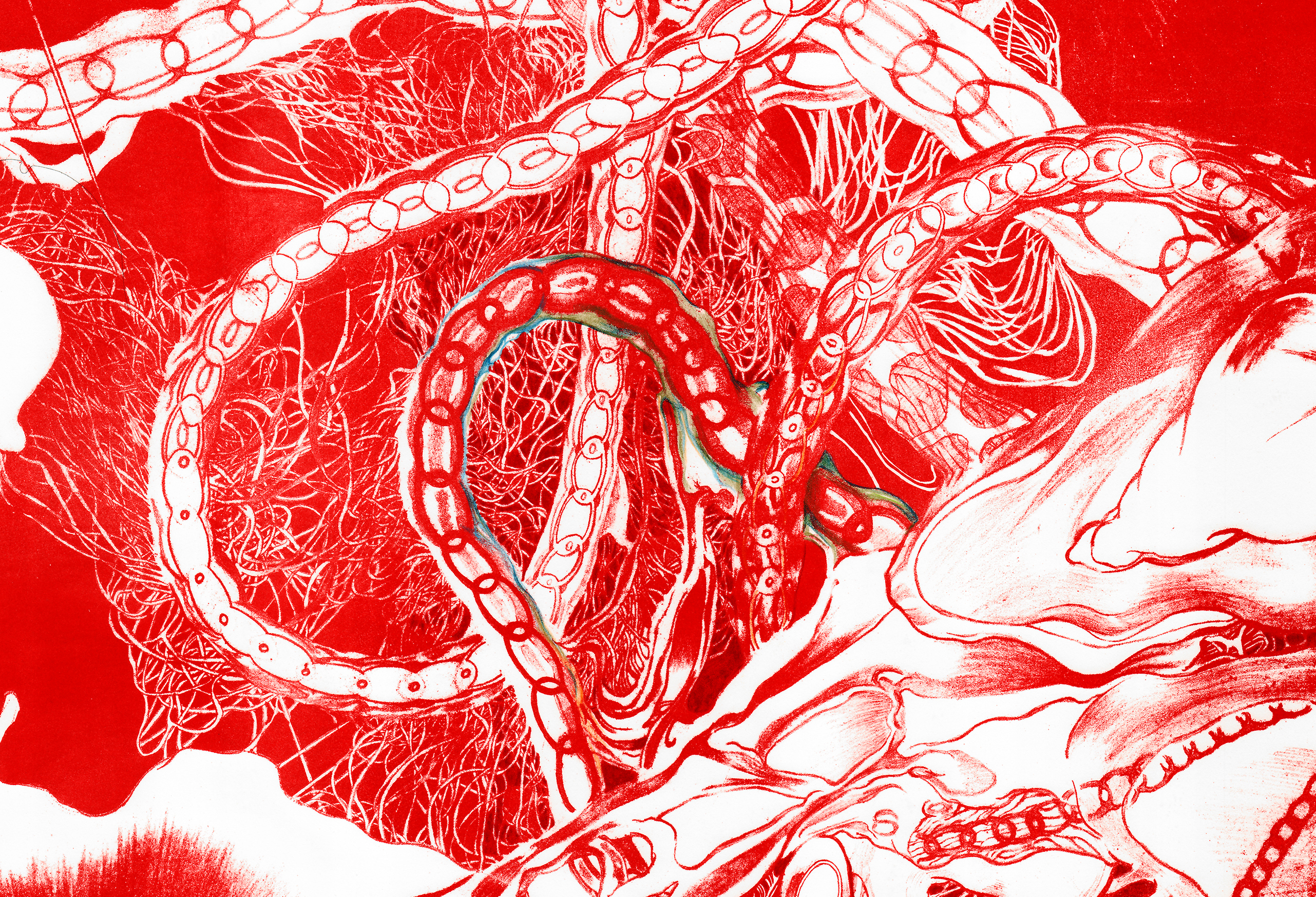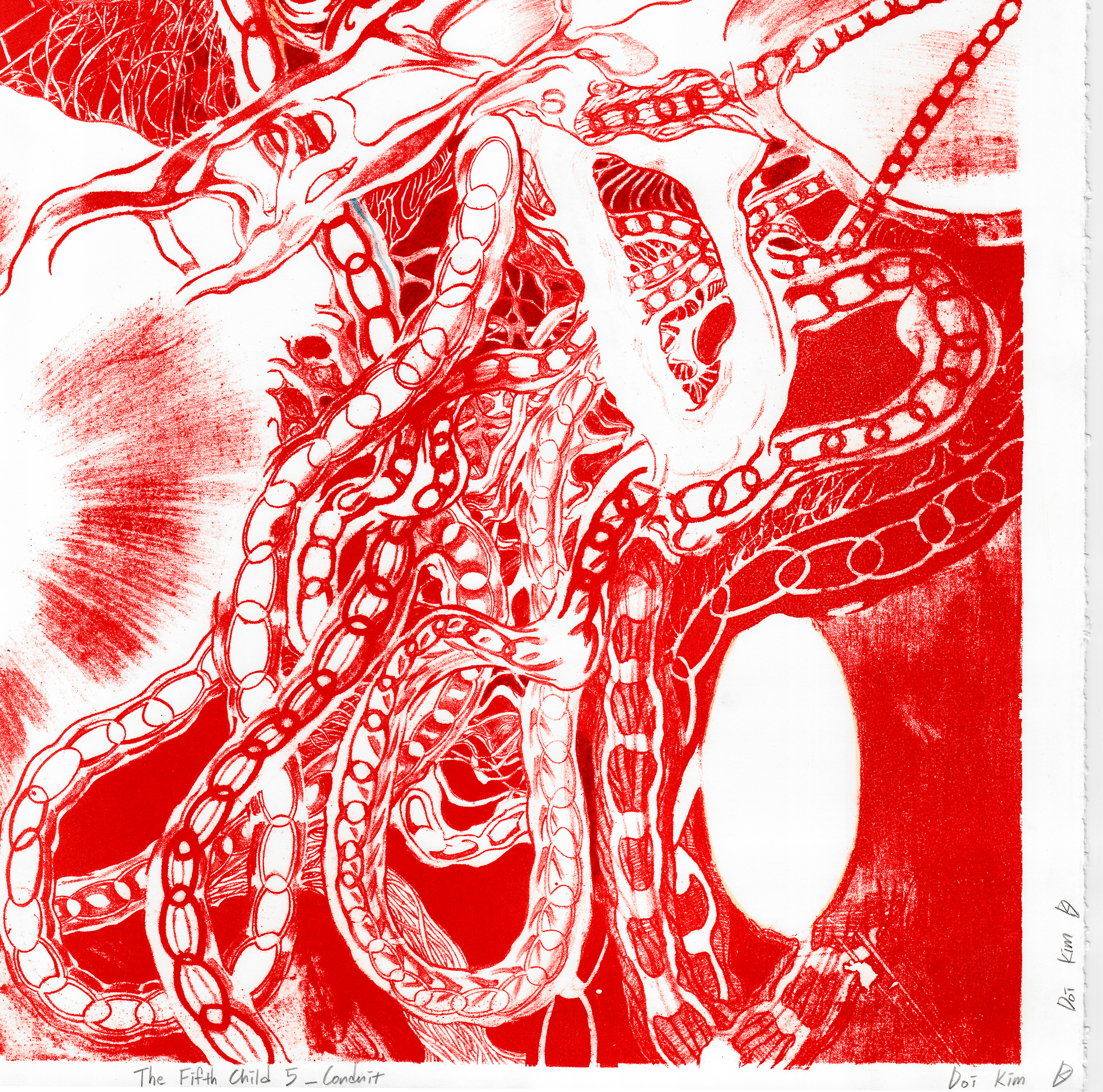The Fifth Child
2020


The Fifth Child (2020) takes cues from epigenetic research and delves into the ramifications of shared mental and emotional experiences within a family or one intimately related social group.
Epigenetics collectively refers to the genetics of things other than DNA. Epigenetics has proven that traits acquired from experiences are inherited, as presented in Darwin's theory of evolution. Based on the concept of epigenetic research, The Fifth Child (2020) provides clues to think about experiences that one has not experienced firsthand but are closely related mentally or physically through blood ties.
The project consists of five lithographs depicting a speculative scenario in which the fetus faces trauma or experience from previous generations while forming itself in the mother's womb. The title of the work is named after Doris Lessing's 1988 novel The Fifth Child. In Lessing's novel, The Fifth Child, Ben, the dysfunctional fifth child of the family, causes pain to his parents from pregnancy, eventually trampling on his parents' fantasies of a normal, perfect, and traditional family ideology. At first glance, the story seems to focus on a subversive mutant. However, it also appears to be an expression of the repressed subconscious in the compulsive notions shared by a specific social group. Through observing the geopolitical landscape of New York City, where historic trauma forms the basis of many collective identities, The Fifth Child (2020) visually reflects on the impact of mentally and emotionally shared experiences or concepts on the formation process of new subjects.
Each lithograph depicts the stage of development of an embryo, visualized using botanical and anatomical images:
The Fifth Child 1 shows an image of umbilical cords.
The Fifth Child 2 illustrates the formation of internal organs.
The Fifth Child 3 implies the formation of a fictional character affected by transgenerational trauma by depicting the image of DNA structure.
The Fifth Child 4 visualizes the formation of a fetus's muscle inside the mother's womb.
The Fifth Child 5 illustrates an imaginary being ready to break out of the womb and be born into the unknown world.
The fact that lithography is printed on the substrate (paper) from a matrix (lithography stone) solidifies the narrative in the series. The Fifth Child (2020) allows us to substantially imagine the relationship between society and individuals who feel a close emotional bond or are connected with blood ties and its effect on the formation of a subject.
다섯 번째 아이 연작 (2020)은 후성 유전학 연구에서 단서를 얻어 가족, 혹은 밀접하게 연관된 하나의 사회 집단 안에서 공유되는 정신적, 감정적 경험을 다룬다.
후성 유전학이란 DNA 이외의 것들의 유전학을 통칭하며 다윈의 진화론 등에서 제시된 경험으로 획득한 형질이 유전된다는 점이 후성 유전학을 통해 증명되었다. 이러한 후성 유전학 연구의 개념을 바탕으로 시작된 다섯 번째 아이 연작 (2020)은 자신이 실제로 경험하지 않았지만, 정신적으로, 또는 혈연을 통해 육체적으로 긴밀하게 연관되어 있는 경험에 대해 사유하기 위한 단서를 제공한다.
다섯 번째 아이 (2020)는 태아가 자신을 형성하면서 어머니의 자궁 속에 있는 동안 이전 세대의 트라우마 또는 관념과 마주하는 가상의 풍경을 묘사한 다섯 점의 석판화로 구성되어있다. 이 작품의 제목은 도리스 레싱의 1988년作 소설 『다섯 번째 아이』를 차용하였는데, 소설에서 예상치 못하게 얻은 다섯째 아이인 벤은 임신 과정에서부터 부모에게 고통을 주고, 결국엔 자신의 부모가 가진 완벽하고 전통적인 정상 가족에 대한 환상을 짓밟는다. 이 소설의 내용은 얼핏 전복적인 돌연변이에 초점을 맞춘 듯 보이지만, 정상 가족이라는 특정한 사회 집단이 공유하는 강박적인 관념 속에서 억압된 무의식에 대한 표현으로 보이기도 한다. 다섯 번째 아이 (2020)는 역사적 트라우마가 수많은 집단 정체성의 근간을 이루는 뉴욕의 사회정치적 상황을 관찰하면서 소설 속 인물 ‘벤’이 표현하는 것 처럼 하나의 사회 집단 속에서 정신적, 감정적으로 강렬하게 공유되는 경험 또는 관념이 새로운 주체의 형성 과정에 있어 미치는 영향에 대해 시각적으로 사고하기 위해 제작되었다.
다섯 번째 아이 연작은 식물처럼 보이기도 하는 해부학적 이미지를 사용하여 태아가 태내에서 근육, 피부, 혈관, 감각기관 등 자신을 구성하는 과정을 다섯 단계에 걸쳐 묘사한다:
다섯 번째 아이 1은 엉킨 탯줄의 이미지를 묘사한다.
다섯 번째 아이 2는 내부 장기의 형성을 묘사한다.
다섯 번째 아이 3은 DNA의 이중 나선 구조를 묘사 함으로써 부모의 유전 정보를 계승하는 허구적 인물의 형성을 암시한다.
다섯 번째 아이 4는 근육의 형성을 묘사한다.
다섯 번째 아이 5는 자궁 속에서 외부 세계를 응시하는 상상의 존재를 묘사한다.
석판이라는 모체에서 다수의 원본으로 태어나는 판화 작품은 연작 속의 서사를 공고히 한다. 다섯 번째 아이 연작은 밀접한 감정적 유대감을 느끼거나 혈연으로 연결된 사회와 개인의 관계와 그것이 주체의 형성에 미치는 영향을 실체적으로 상상하게끔 한다.


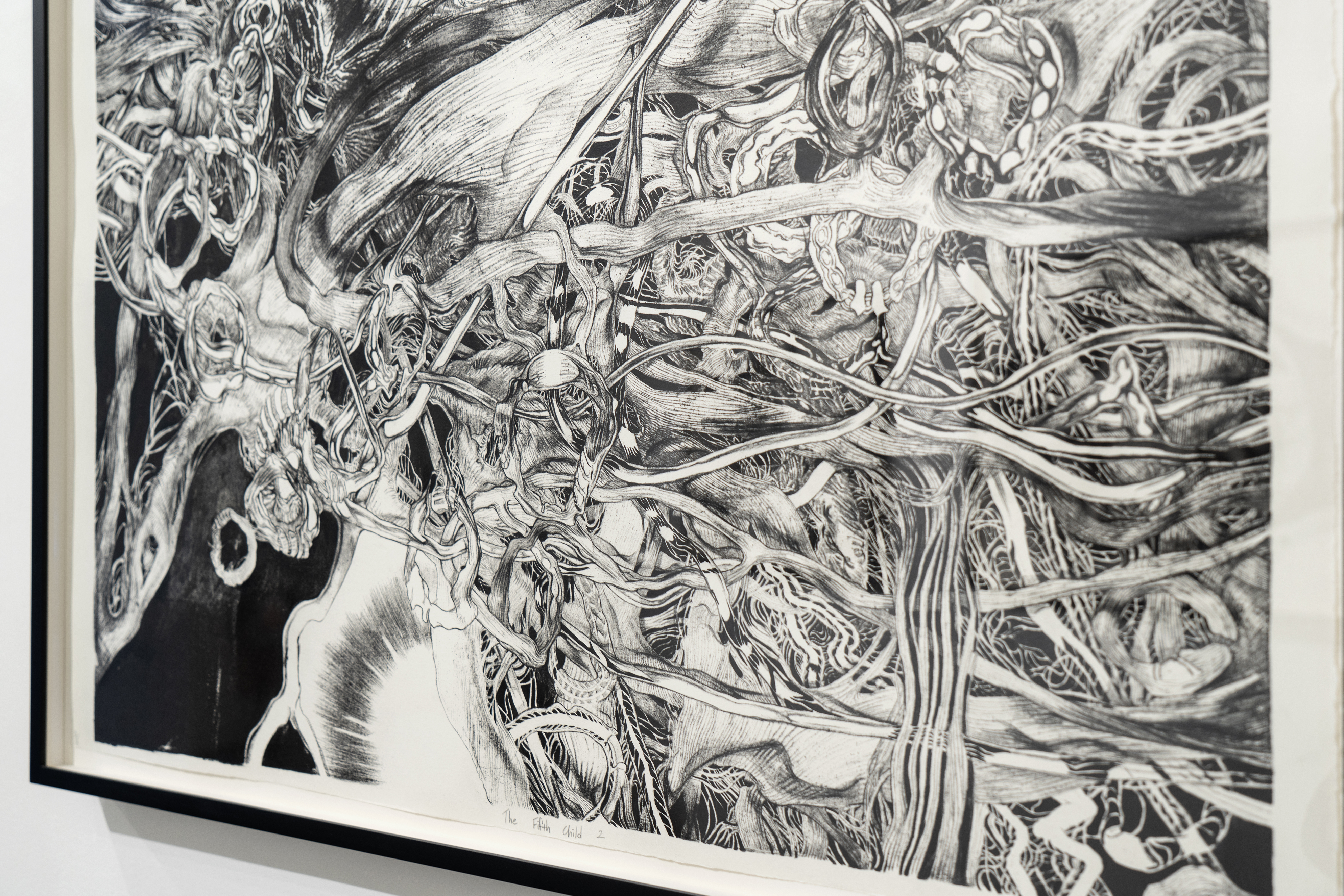



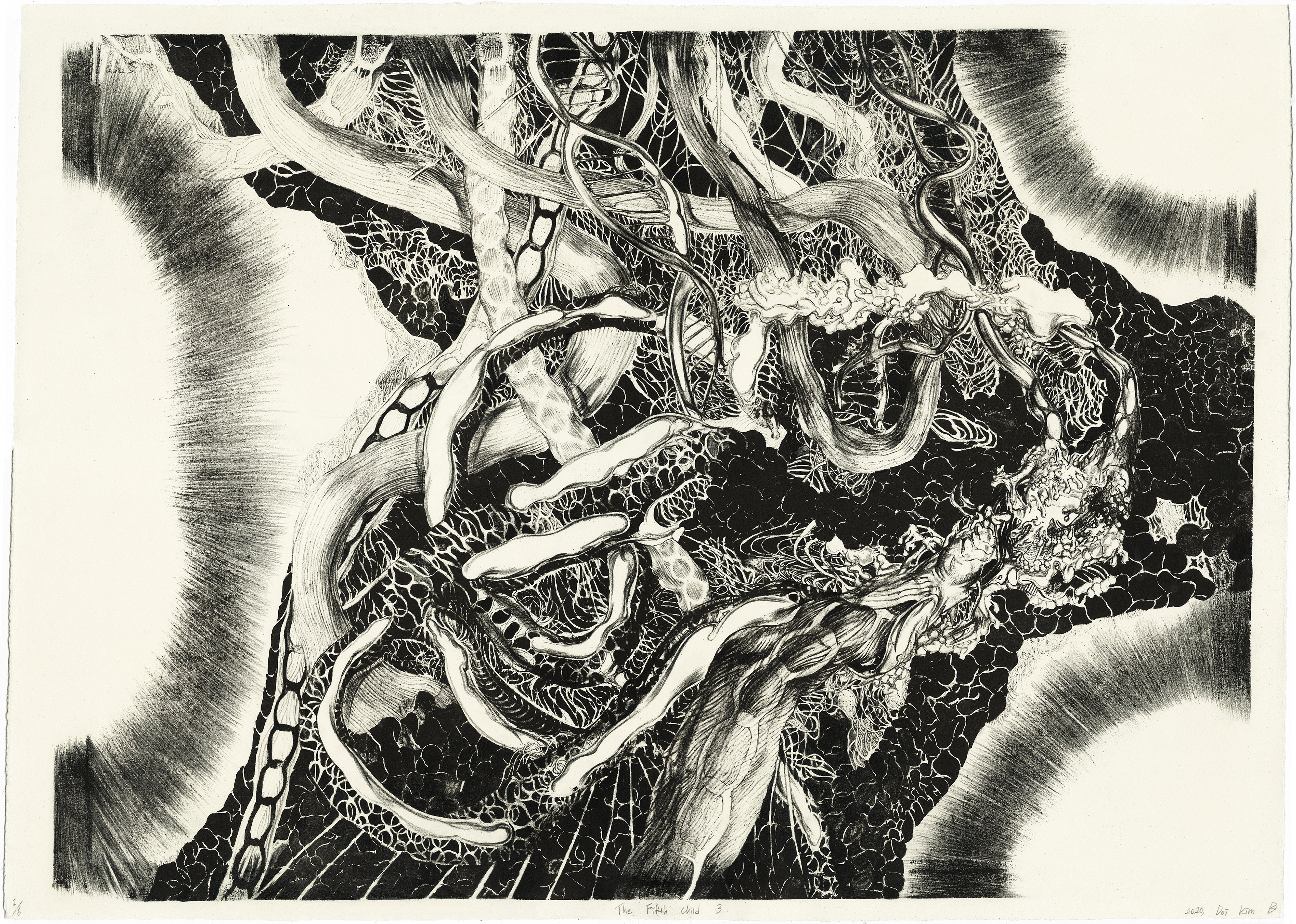
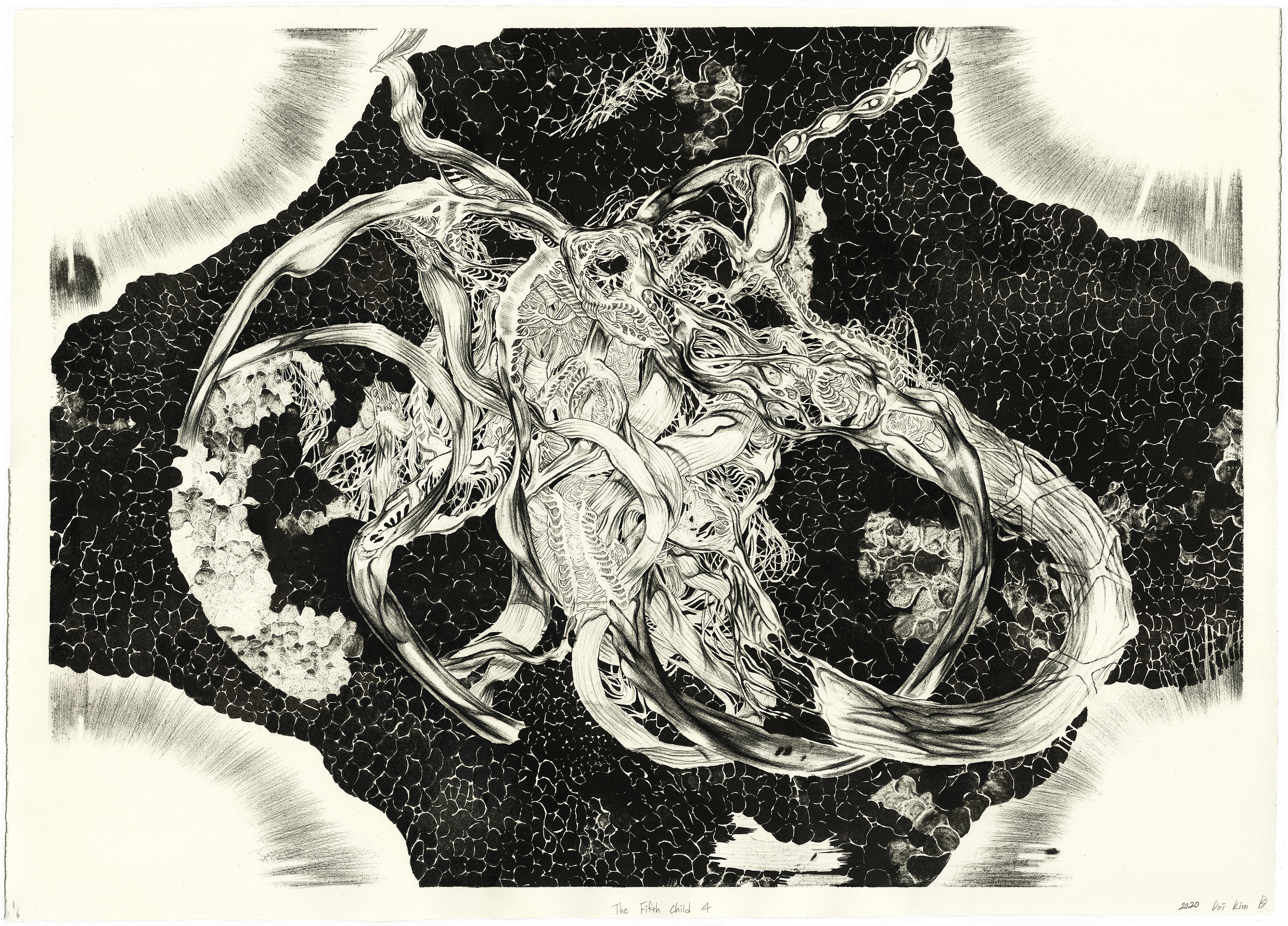

The Fifth Child_ Conduit (2020)
